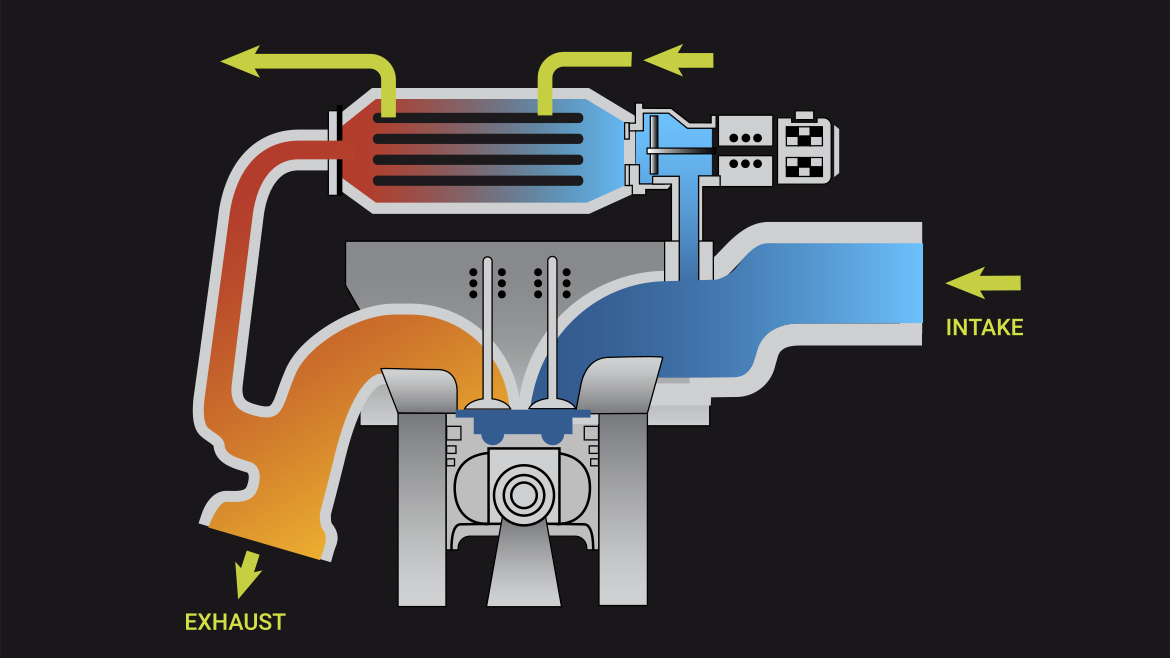How it Works: Exhaust Gas Recirculation (EGR)
Exhaust gas recirculation (EGR) is an emission control technology that reduces nitrogen oxide (NOx) emissions from internal combustion engines.
How Does EGR Work?
EGR works by routing, cooling and feeding a controlled amount of exhaust gas created during combustion back into an engine’s intake air system.

This process dilutes the air and fuel mixture that enters the combustion chambers, which reduces the engine's peak combustion temperature. The lower temperature means less NOx is formed during combustion, resulting in fewer air-polluting emissions.
Where are EGR systems used?
EGR systems have been used for many years in internal combustion engines, including gasoline- and diesel-powered engines. They're found in cars, trucks, buses, and other vehicles, and stationary engines like those used in power plants and factories.
Why is EGR Important?
EGR is a proven way to reduce air pollution caused by transportation and industrial applications.
EGR Drawbacks
But there are also some drawbacks to consider. Notably, a lower- combustion temperature also means a less efficient and complete burn. As a result, some fuel doesn’t burn completely, and ultimately comes out of the exhaust as particulate matter (PM).
For this reason, most diesel applications that use EGR must also employ a DPF to capture the excess PM.
EGR is also known to accelerate engine oil degradation and increase the concentration of contaminants such as soot in the oil. This soot loading can lead to the build-up of deposits on the engine's valves and other components, reducing its overall efficiency and lifespan.
Additionally, EGR systems can decrease the overall power output of an engine, as the recirculated exhaust gas, by diluting the air and fuel mixture, reduces the amount of oxygen available for combustion. This can make the engine feel less powerful and responsive at times.
Lubrication Needs
In addition to regular maintenance, it is vital to use high-quality lubricants to protect EGR hardware and against accelerated soot loading.
Related Articles
The Importance of Controlling Low Temperature NOx
Deadline Approaching ACEA 2021 Performance Claims Required by May 1 2023
The Impact of New Non Road Emission Standards on Engine Lubricants